On Easter Sunday, we disassembled our little camp in the Drakensberg and drove to Ficksburg, a town in South Africa’s Free State province on the border of Lesotho. The drive was beautiful, skirting around the Drakensberg mountains and right through Golden Gate Highlands National Park.
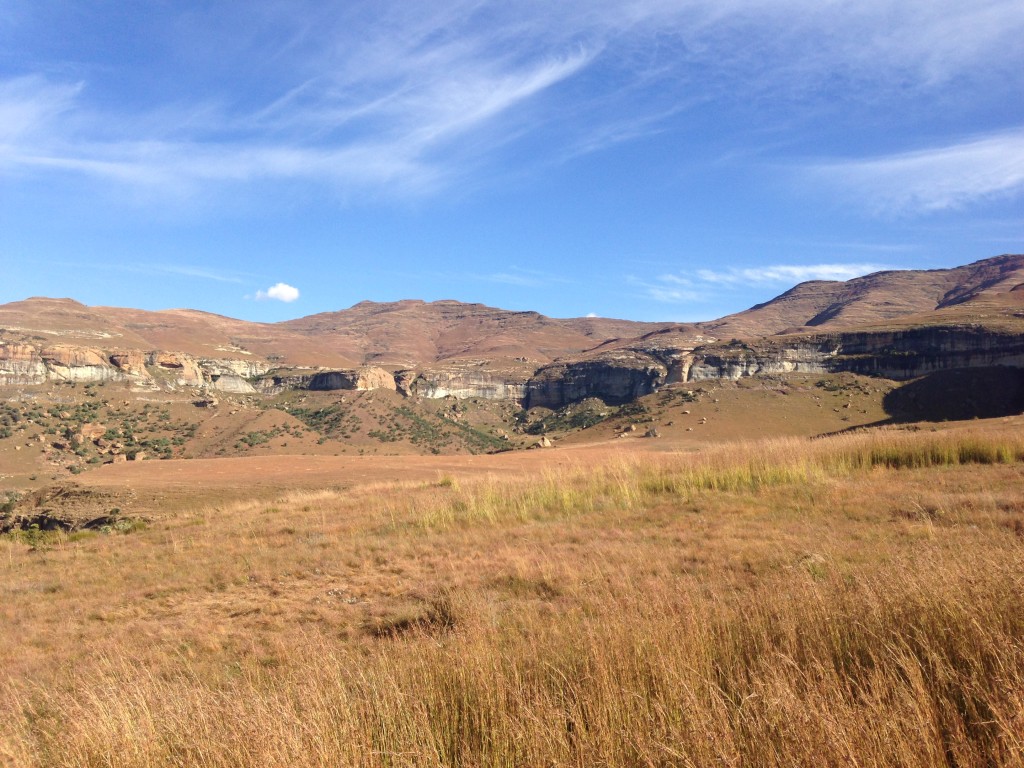
After a night spent luxuriating in a warm, spacious hotel room (so different from our tent!), we crossed into the Kingdom of Lesotho, a landlocked country that is completely surrounded by South Africa.1 Lesotho’s geography is dominated by mountains – its lowest point lies at the lofty elevation of 1,400 meters (4,593 feet). 2
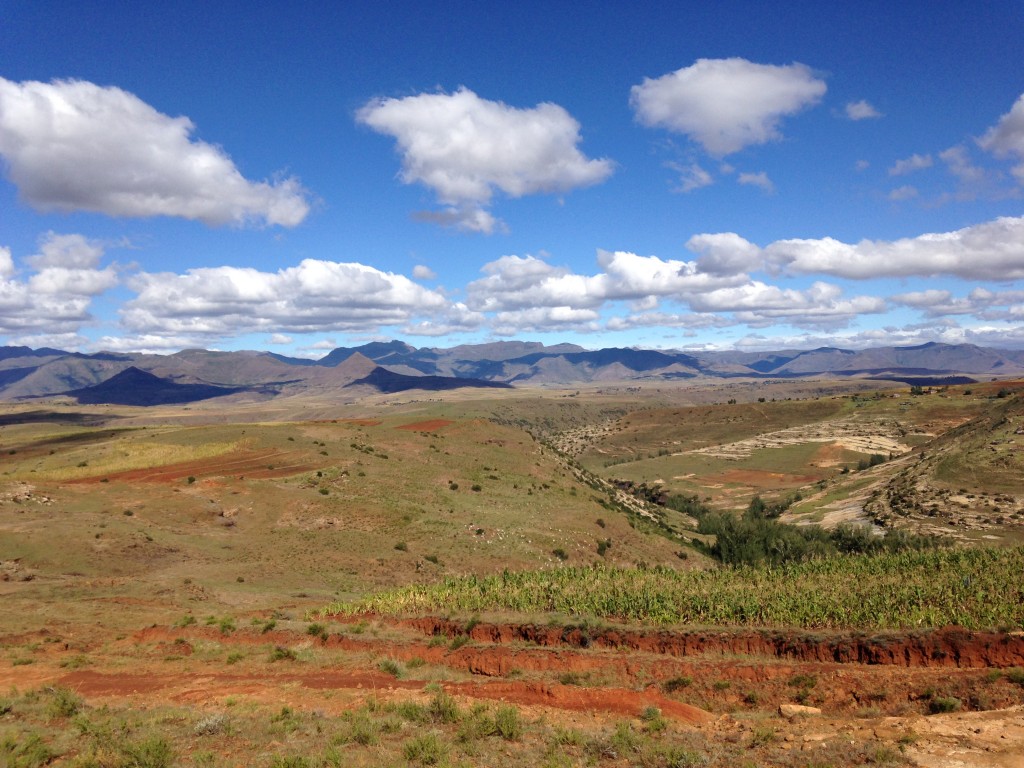
Our first stop was in Maseru, Lesotho’s capital and largest city. (More accurately, our first stop was at the Pick n Pay in Maseru, where we grabbed some lunch supplies to make a picnic in our car in the parking lot. The glamorous life of travel here, folks.) Maseru isn’t large on attractions, and we didn’t spend long in the city.
Thaba Bosiu
Just outside of Maseru is Thaba Bosiu, a large sandstone plateau that we understand to be one of the country’s most important historical sites. Despite all available information stressing the importance of Thaba Bosiu, we found a strange dearth of signage to help potential visitors find it.
Eventually, we located the visitor center and arranged for a guide. The path isn’t difficult to negotiate, but our understanding of the historical significance was greatly improved by having a guide. He told us the story of how Moshoeshoe I used Thaba Bosiu, with its few access points, as a stronghold, and he showed us around the remnants of the settlement located at the top of the plateau.
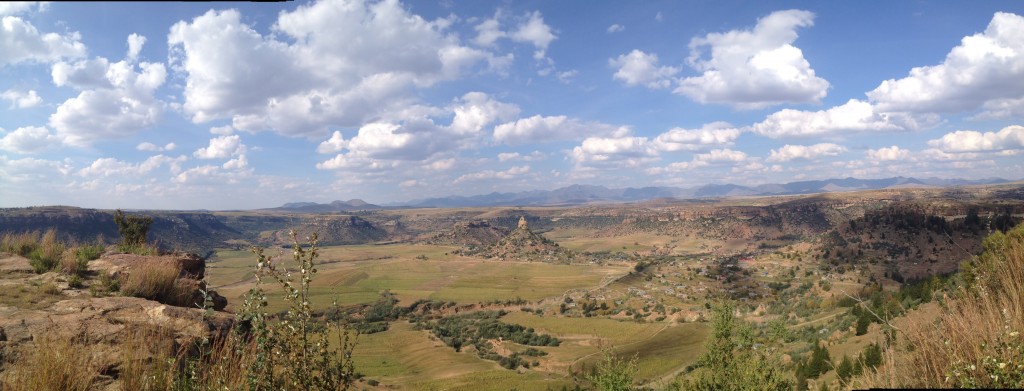
Malealea
After our climb on Thaba Bosiu, we headed further into Lesotho to the village of Malealea, via the Gates of Paradise pass. The drive was amazing – at every turn, we found ourselves more and more enchanted by the mountainous scenery – and the tarred roads were well kept. At the top of the pass, the tarred road and electrical power lines ended, opening up to show a high valley beautifully ringed by mountains.
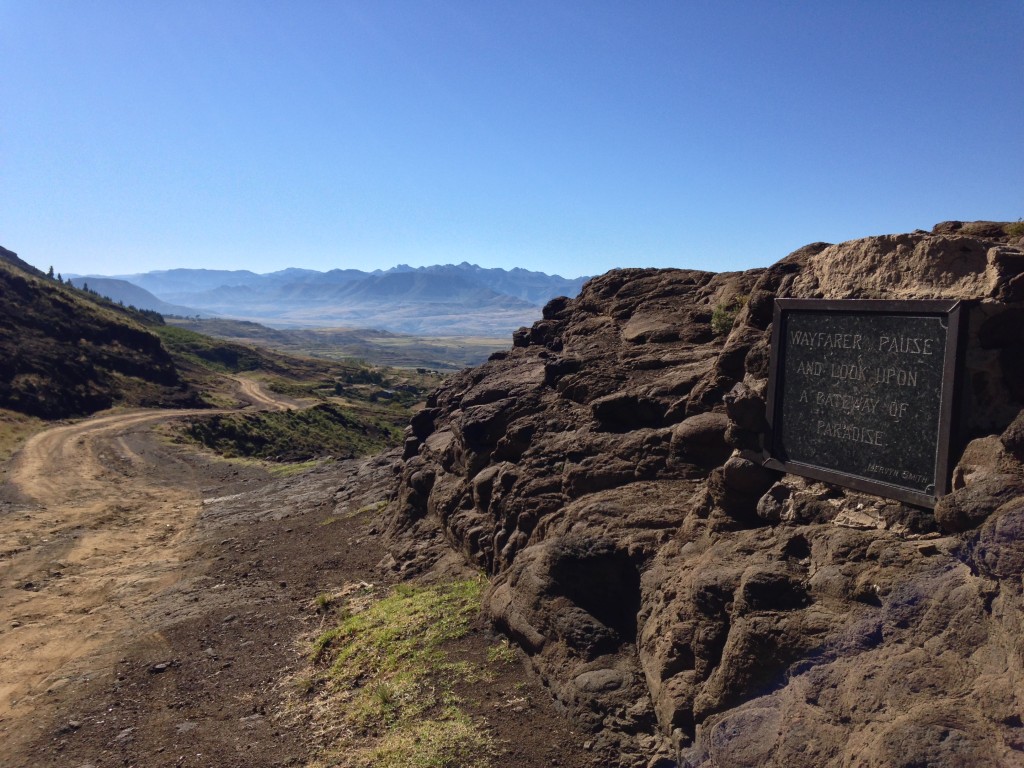

We had made reservations at Malealea Lodge, a place that proclaims to offer “Lesotho in a nutshell.” The lodge began as a trading post in 1905 and now operates as a bustling guesthouse, hosting both individual tourists and groups. The lodge encourages a sense of community with breakfast and dinner served in a large dining room and a fire pit around which to meet other travelers. Like the rest of Malealea, and the surrounding and further isolated mountain communities, the lodge operates largely without power. The lodge has a generator, which is fired up for a few hours in the evening and provides enough electricity for lights and charging devices. The lodge also assists in arranging activities for its guests, helping connect them with local guides for hikes or the famous pony treks.
On our first full day in Malealea, we hired a guide for an afternoon hike to Botsoela Waterfall. The hike was projected to take four hours roundtrip, but we had to hunker down under a rock outcropping to wait out some rain showers. (Interestingly, the hardest of the rain hit us just as we were reaching the same point on each way of the hike.) Rain aside, the hike was fantastic, leading us through some incredible scenery.
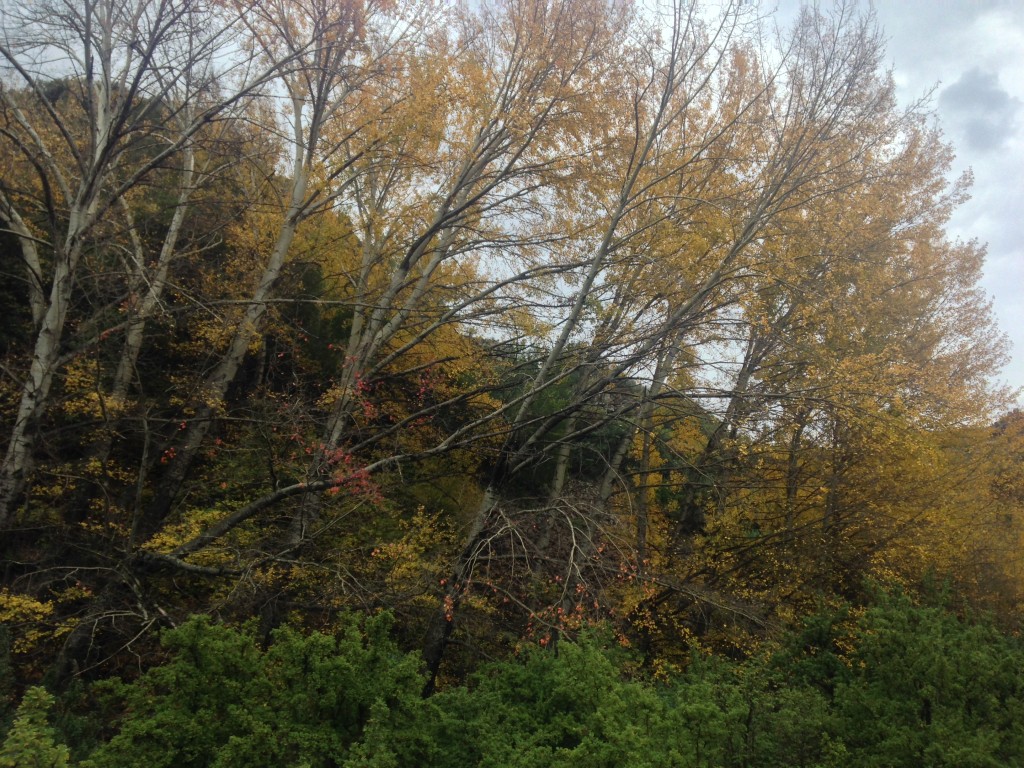
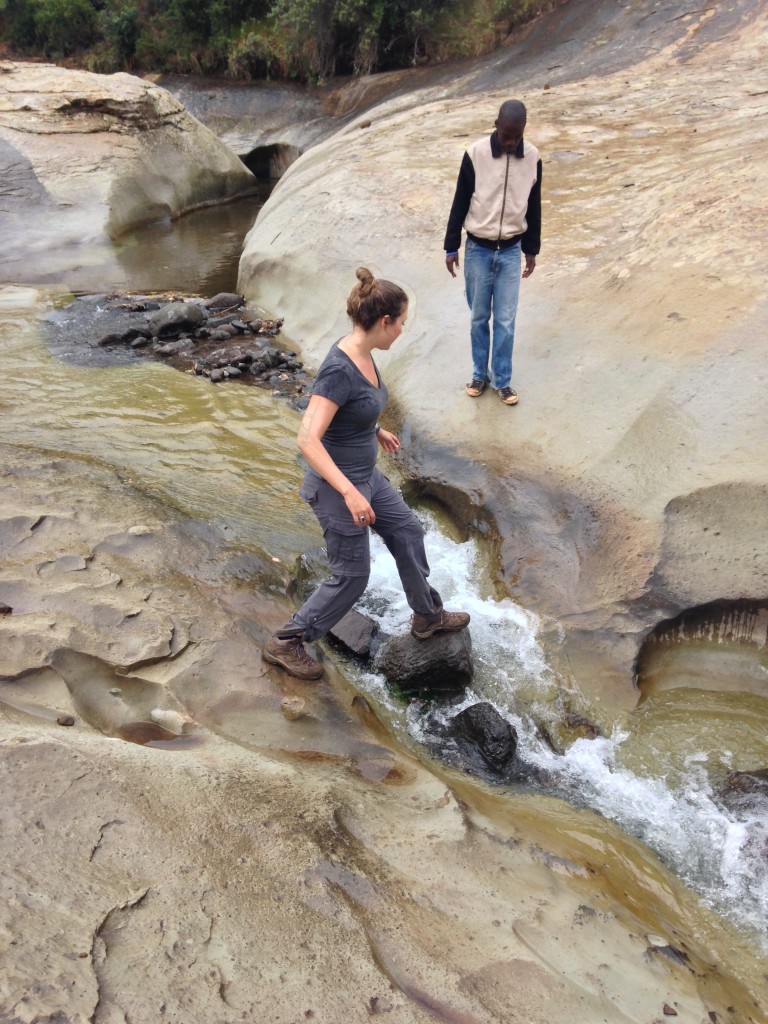
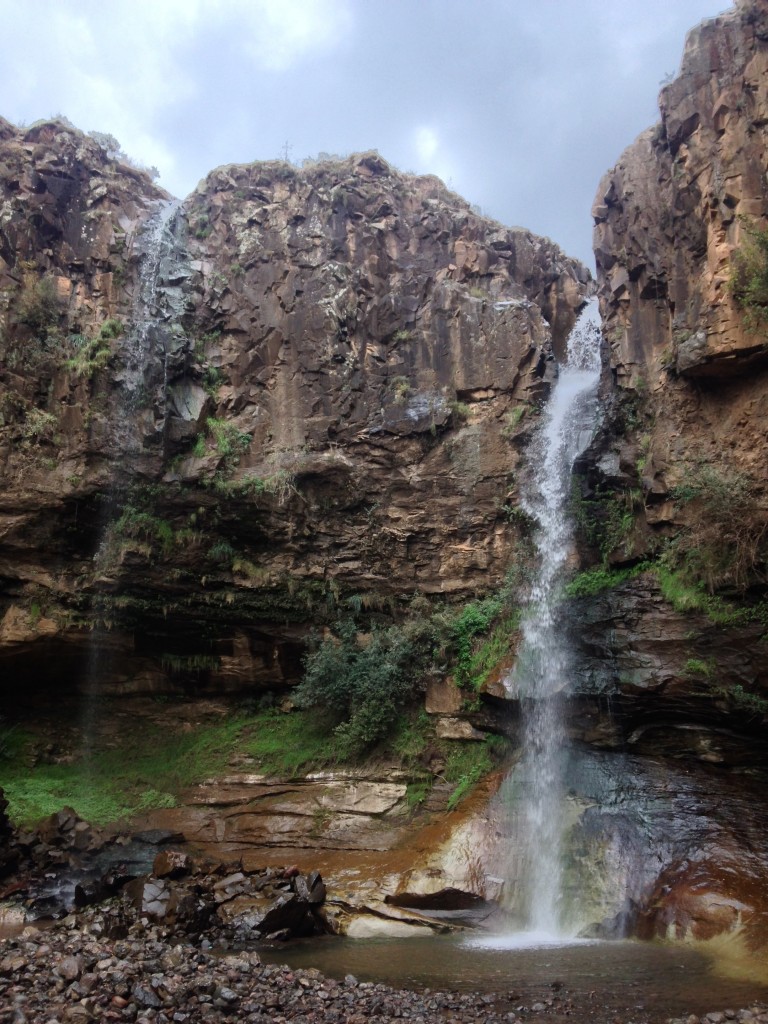
The next morning, we set out for a two-day pony trek, one of the most iconic things to do in Lesotho. Because of the mountains and the distance between villages, and the lack of roads in the interior, ponies are the traditional method of transportation for people in Lesotho’s mountains.
The trek started off pleasantly enough, with us chatting with our guide (whose name was, interestingly, also Malealea, which he told us was because his ancestors were village chiefs) and riding our ponies along a lazy path through maize and sorghum fields.
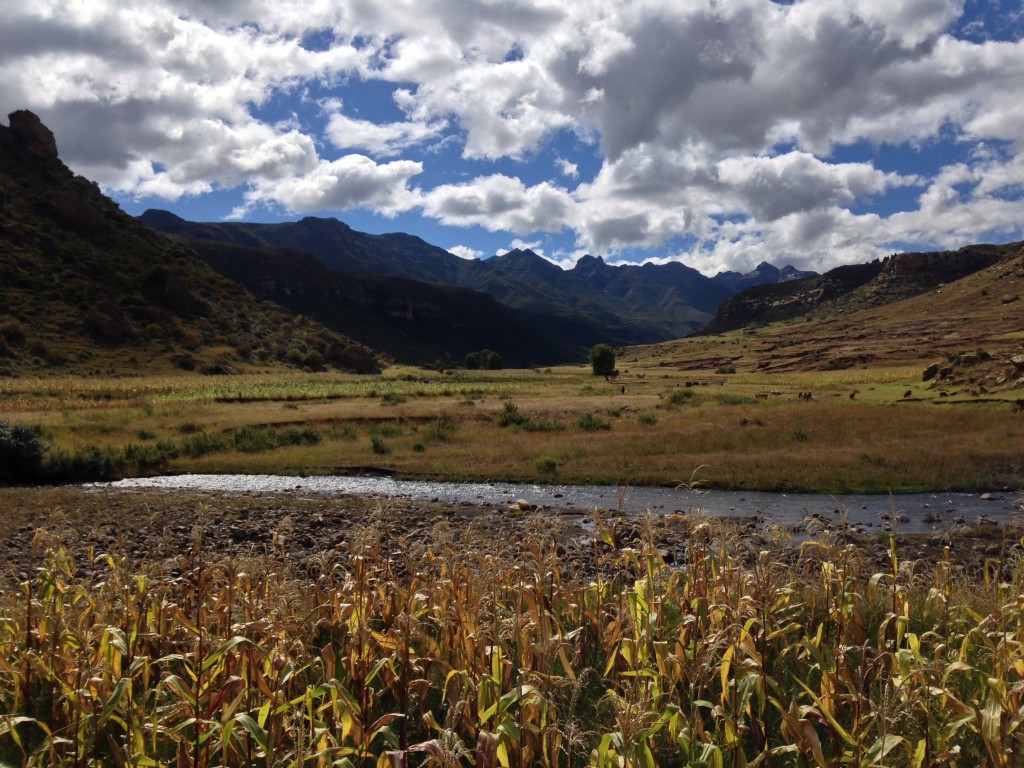
The lodge’s handbooks had warned us portions of the trek could be “hair-raising,” and we didn’t have to wait long to encounter one of these less pleasant sections. Not far from the village, we came to steep, rocky path leading down the side of a mountain. My pony (whose name was Mistress, but I privately referred to as Diva) refused to go down the path, choosing instead to turn about in circles. Marc’s horse, Robben Island, however, was a model of obedience.
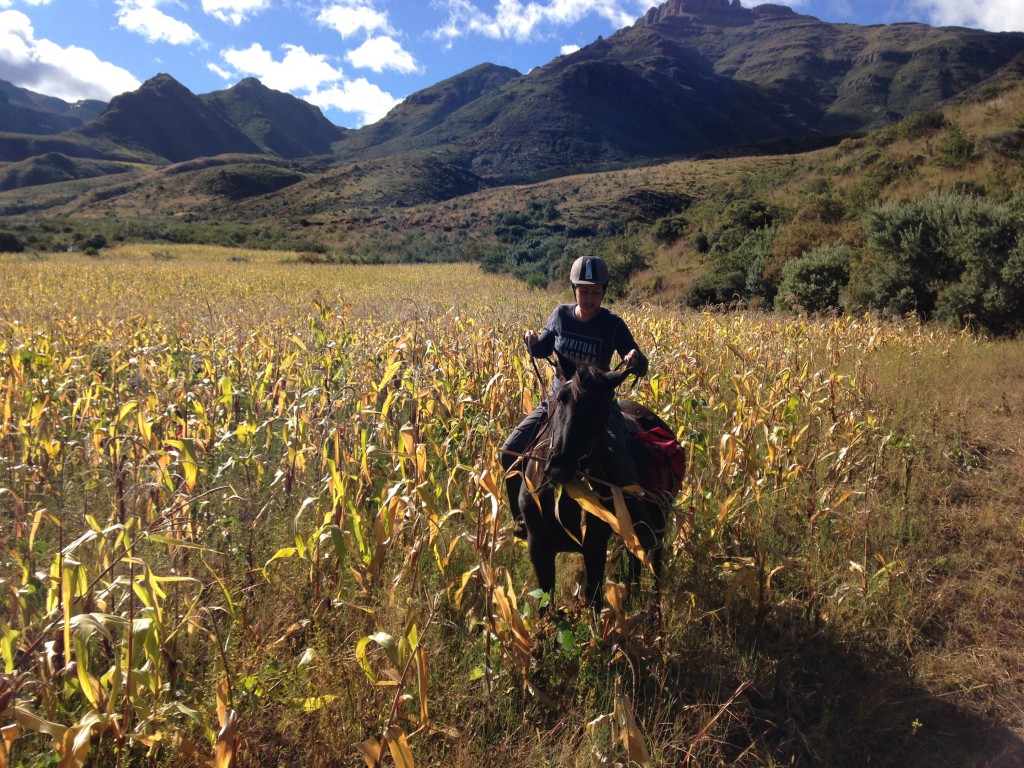
As unenthused as I was about heading down that path on horseback, I was even less enthused about heading down it on the back of a reluctant horse, and so I breathed a sigh of relief when Malealea directed me to dismount and lead Mistress down the path on foot. Even with me leading her, it was difficult to coax the horse down the path, and I began wondering what I had gotten myself into.
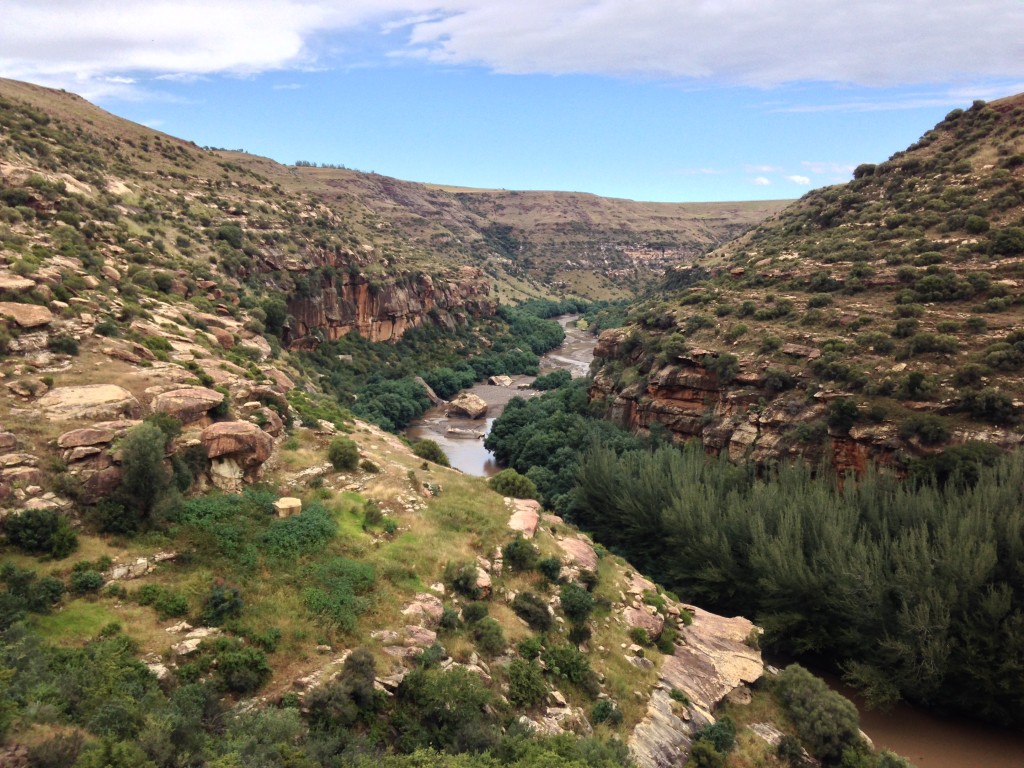
As it turned out, that was only the first of the hair-raising portions of the trek. The path we followed through the mountains was usually rocky (I couldn’t decide which was worse: the loose rocks that the ponies occasionally stumbled over, or the smooth patches of rock on which the ponies slid and skidded), and often narrow. In places, it ascended or descended sharply; in other places, it wound along the edge of mountain, a steep drop-off gaping below. Despite these portions which left me white-knuckled (although they didn’t bother Marc in the slightest, who found the experience to be completely relaxing), the view from the path was breath-taking. It was the kind of scenery that, if I hadn’t seen it with my own eyes, I wouldn’t have believed was real.
After lunch, a line of thunderstorms that had been threatening all day erupted into a downpour. We scrambled into our ponchos and continued along the path, which was quickly becoming more and more muddy. At one point, a downhill portion of the path was too muddy to pass on horseback. We all hopped off our ponies and tried to lead them down the slippery path, something which proved challenging. Malealea kept reminding us to stay well in front of the horse, but negotiating the muddy path was difficult and the ponies kept slipping and sliding nearer to us than wanted.
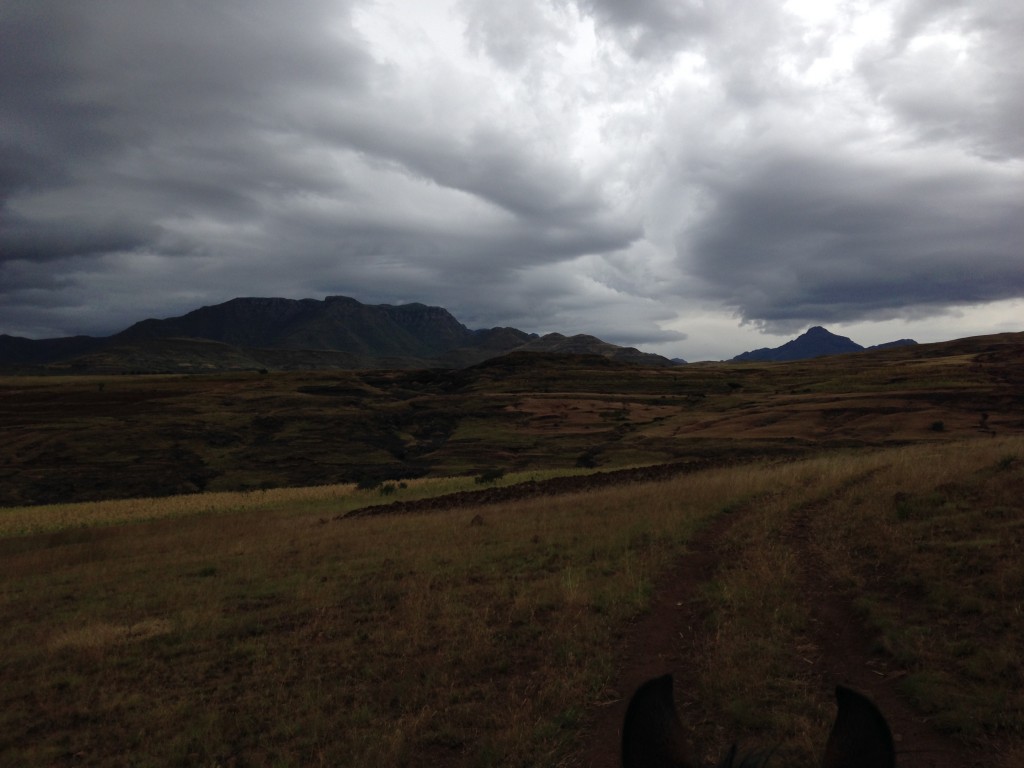
Eventually, the skies cleared and we arrived at the village of Ribaneng (population: 20) in which we would be spending the night. The village appeared as if it had remained unchanged for decades. Its residents were cattle and sheep herders who also farmed maize and sorghum in terraces hacked out of the surrounding mountains. Two of the only advancements appeared to be a mobile phone signal from a far off tower and an errant solar panel, whose size would not have enabled it to do much more than charge a mobile phone. We knew the accommodation would be rustic, without the advent of power or running water, but it was still hard to see the one-room mud hut, without any chairs or beds, when we pulled up, cold, wet, and sore from the journey (and with what I felt like was the start of a cold).
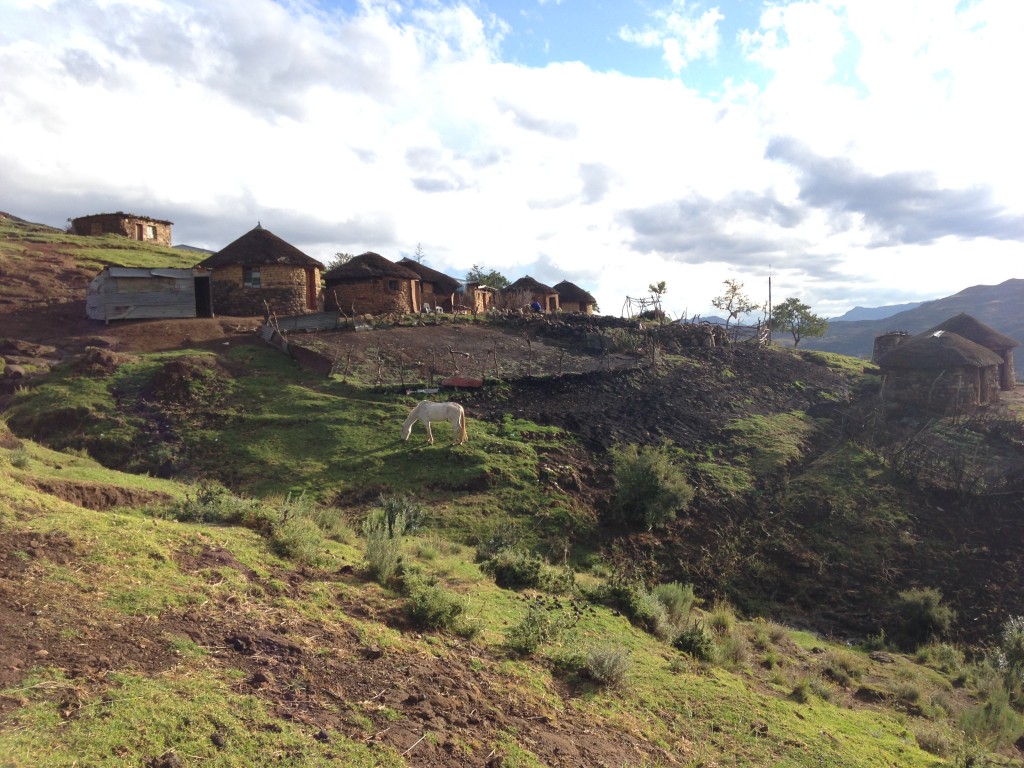

Happily, the room didn’t stay chairless or cold for long. Malealea brought some plastic chairs over from the hut next door, and we huddled around the small gas burner that we had hauled up from the lodge on horseback, trying to warm up and drinking tea. If the weather had warmer (or drier), we could have done some hiking from the village (there is a nearby waterfall which we were able to see in the distance), but, with intermittently passing showers, we spent the evening indoors.
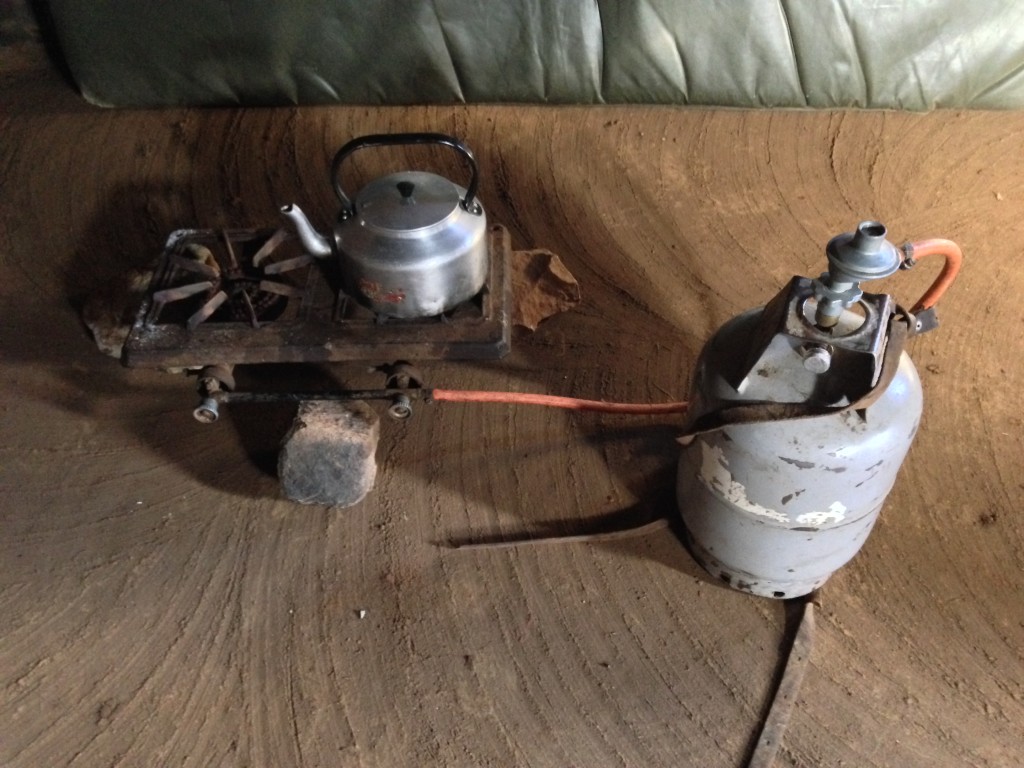
Before retiring to the hut next door for the evening, Malealea brought us some mats on which to unroll our sleeping bags. After we cooked a surprisingly delicious dinner of spaghetti and canned sauce augmented by canned peas, we snuggled down into our sleeping bags and read by candlelight. It was pitch black in the village and the only sounds were the bells around the necks of the cattle that were sleeping just outside our door.
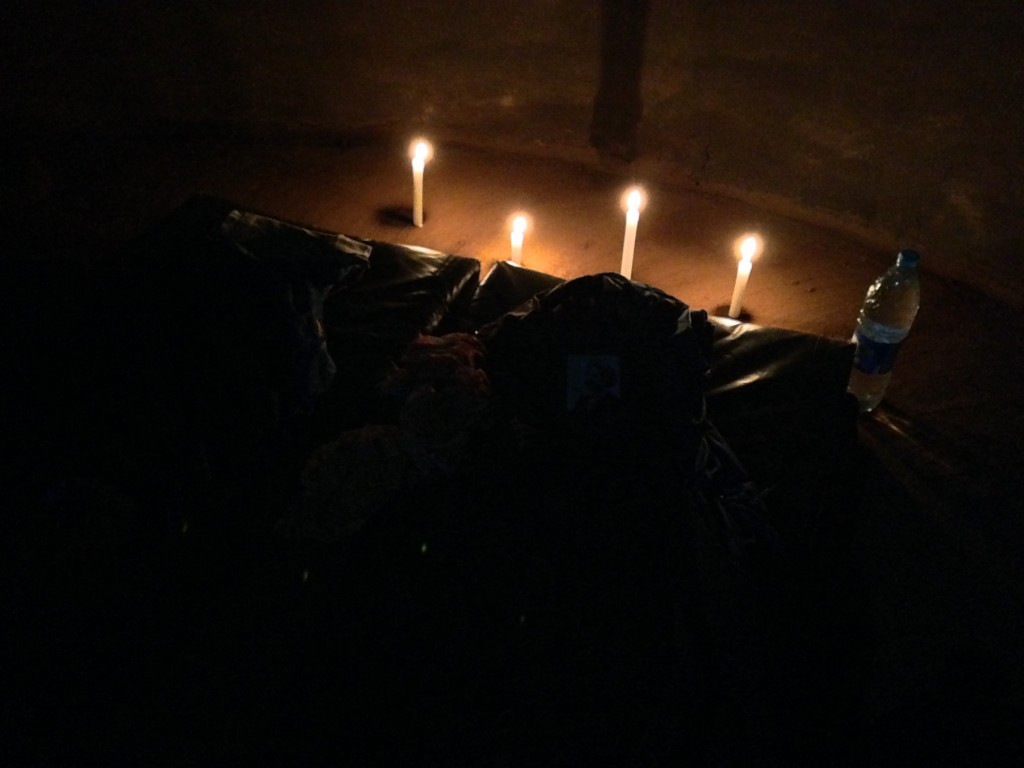
We woke up the following morning to a clear, beautiful day, and, after a quick breakfast, we set out to return to Malealea Lodge. Although it didn’t rain on our way back, one portion of the trail was a veritable mud from the previous day’s rain. At one point, we had to dismount from the ponies – easier said than done, as it was hard to get our footing on the muddy path – and attempt to coax them down a slippery, muddy chute. They finally went forward in a tangled clump, almost tripping over each other, and we scrambled to catch up to them without ending up in the mud ourselves.
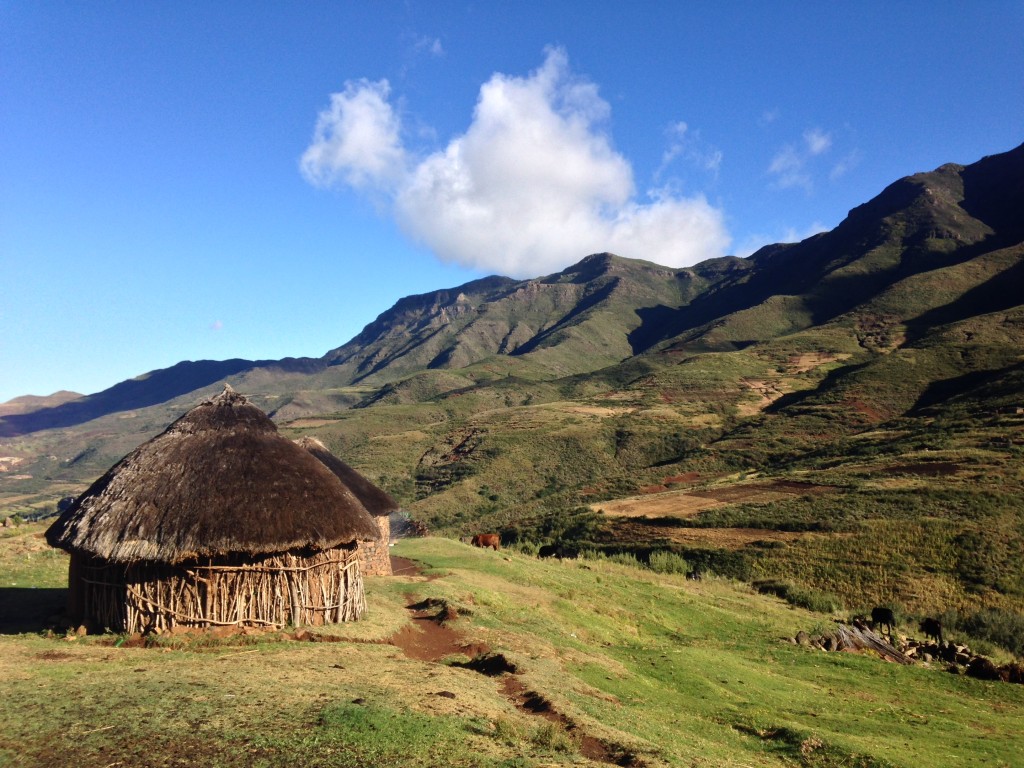
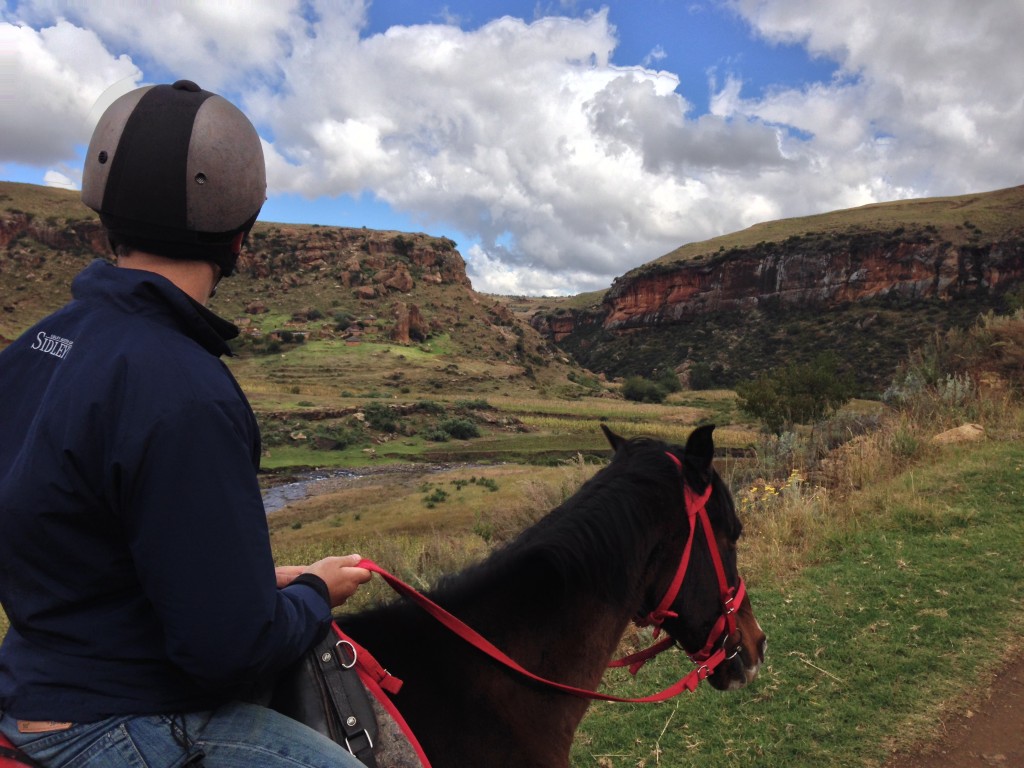
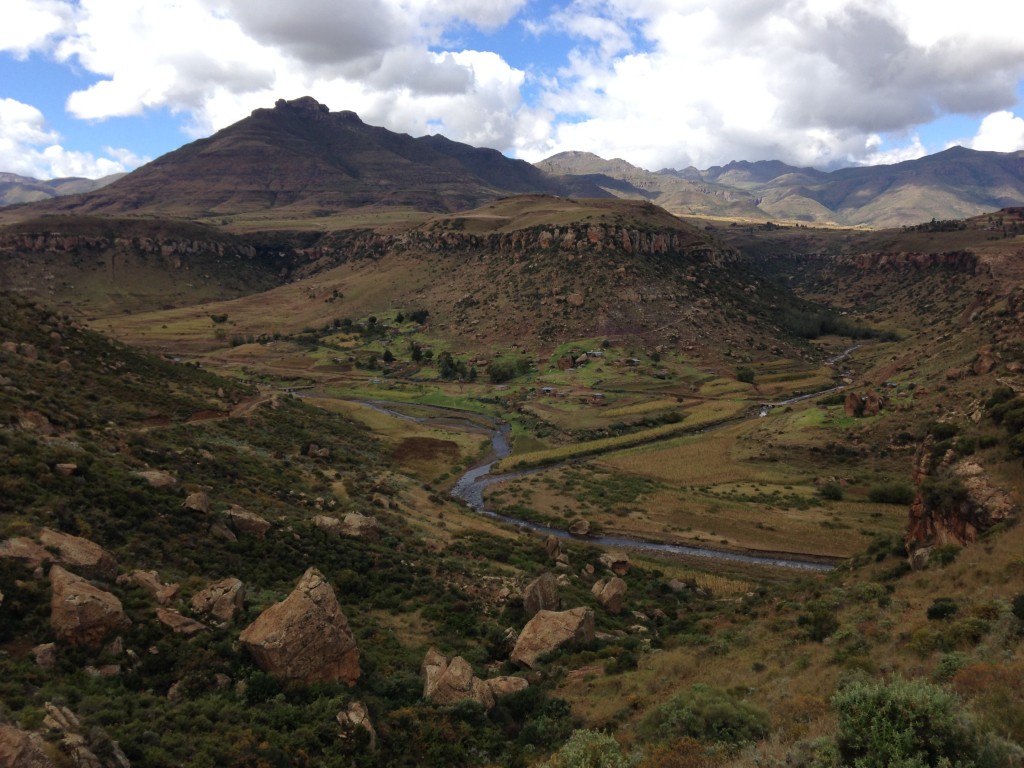
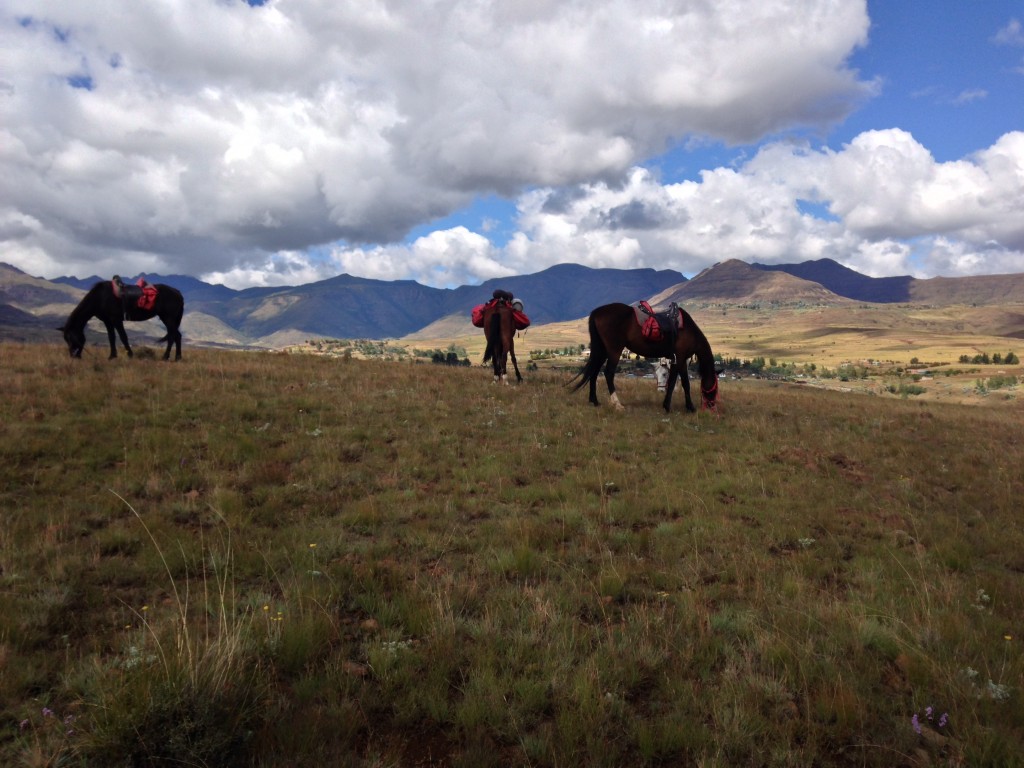
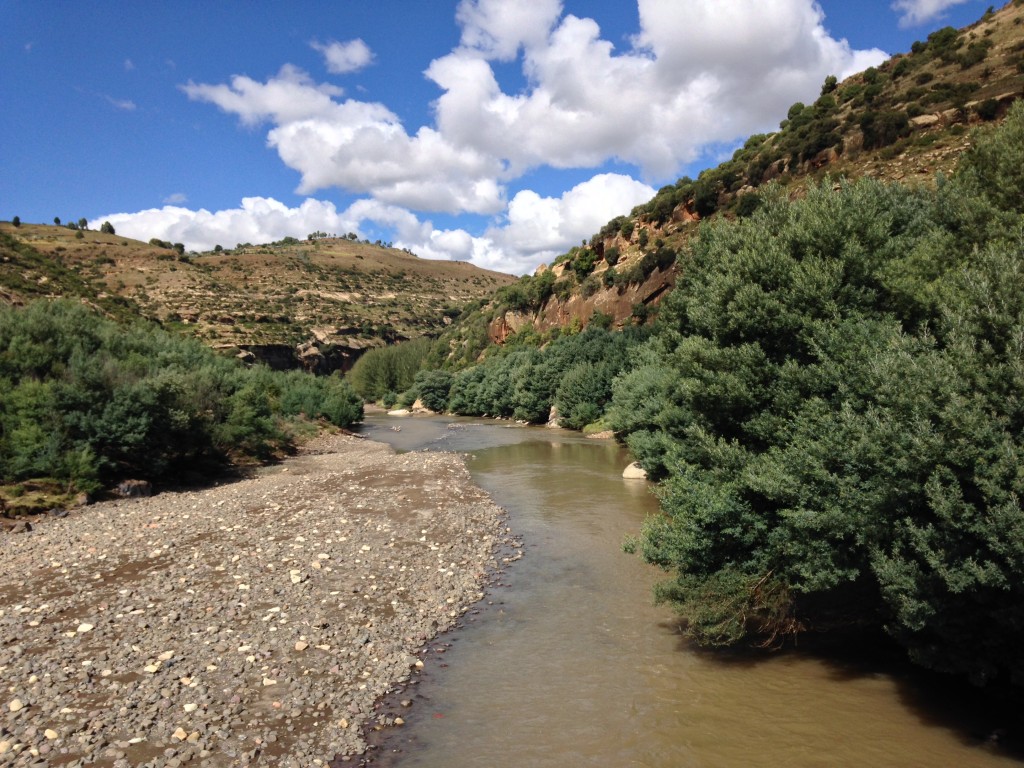
We returned to Malealea Lodge in the mid-afternoon. The trip was amazing (and I can only imagine how amazing the longer treks must be), but, by the time we arrived back at the lodge, I was a little sore and ready to get off my pony’s back. After a couple of cups of coffee fortified with shots of Amarula on outside on a bench overlooking the mountains, all was well again. We joined some of the other lodge guests and the owners at big table for wonderful dinner that evening, chatting about everything from Lesotho and our various travels to sheep farming and used book stores.
Quthing
We left Malealea Lodge the following morning and headed back to South Africa, stopping in Quthing on the way. The main attraction in Quthing is a set of dinosaur footprints. The directions to the footprints were somewhat vague, but we managed to find them without too much trouble – only to find the shed that protects them locked. We were there within the posted opening hours, but there was no one else in sight. We jumped and peered through the windows of the shed, catching a couple of glimpses of the footprints.
We then visited the Masitise Cave House, an interesting home dating from the 19th century that a French missionary had been constructed by bricking off the entrance to an old rock cave that had previously been used by the indigenous San people. Here too, even though we were there during alleged opening hours, the caretaker wasn’t around to let us into the attraction. However, a woman who was doing her laundry in the yard offered to let us in, although she warned us that she wasn’t going to be able to give us much of a tour.
We assured her that was all right, and followed her into the strange cave house. We had to duck to enter, and only a few rooms were available for viewing, each which had been filled with exhibits. The displayed items varied widely: from traditional Basotho clothing to information about printing to examples of cave paintings.
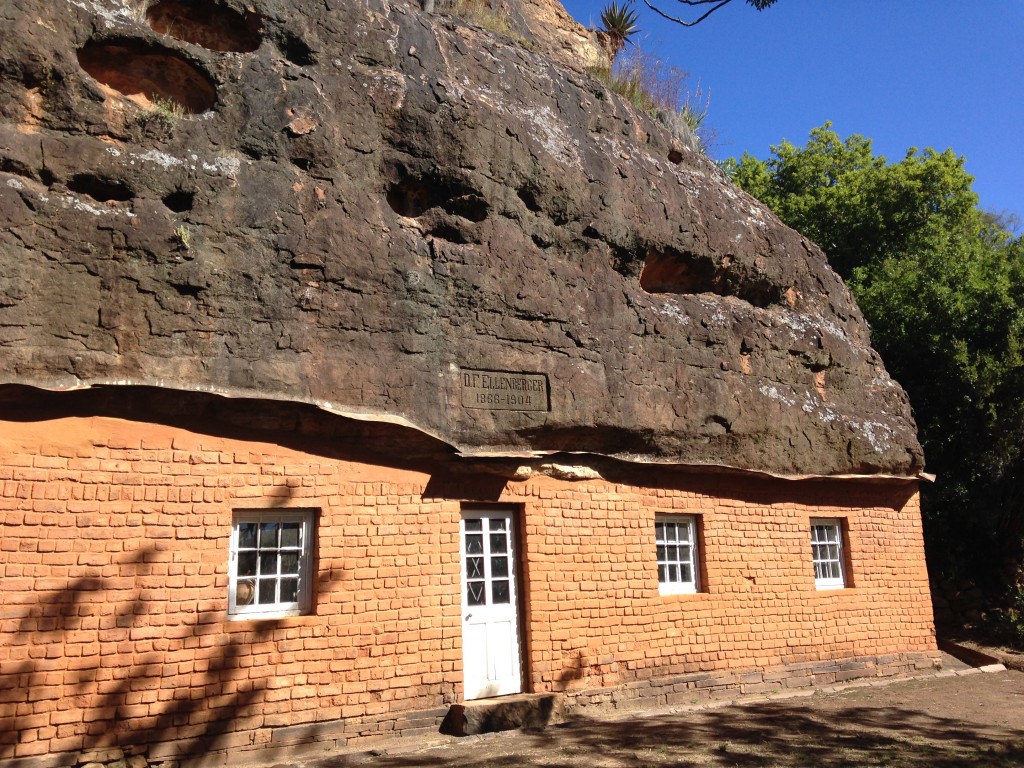
Where We Stayed
☆ Imperani Guesthouse, Ficksburg, ZA. Three goats. Pleasant accommodation, and a nice place to warm up and clean off after a few days of camping. Price included breakfast and free wifi. We had dinner at the on-site restaurant, which had a wide menu. We shared a salad and a busy pizza, which included bananas as a topping. (“Surely they mean banana peppers,” we reasoned, reading the menu. Nope. They meant bananas.)
☆ Malealea Lodge, Malealea, Lesotho. Five goats. Malealea Lodge was everything we wanted and more. We stayed in a double rondavel with self-catering facilities, which we used to make dinner on the night of our arrival and breakfast on the morning of our departure. We didn’t use our kitchen more often because the communal meals served at the lodge were delicious and a good value. The owners and staff were friendly, arranging activities was easy, and there was a bar area with a fire to sit around and meet other travelers.
Lesotho Practicalities
→ American citizens do not need to prearrange a visa.
→ As in Swaziland, we needed to obtain a letter of permission from Avis to bring our rental car across the border. We picked up this letter on our way out of Durban. Although we weren’t asked for our specific travel dates when we obtained the letter for our journey into Swaziland (the Avis location in downtown Nelspruit just provided us with a letter that covered the entirety of our car rental period), we were asked for our intended entry and exit dates when we got the letter for Lesotho from the Avis location in Pinetown. No one studied the letter at any of the border crossings, but the South African exit side did look to make sure that we had it.
→ The official currency in Lesotho is the loti (plural: maloti), which is tied to the South African rand. Rand can be used freely in Lesotho. Maloti cannot be changed outside of Lesotho.
→ Traffic stops are common along the main highway that rings Lesotho. Be sure to wait until the police office beckons you forward before approaching. During our trip, we were stopped maybe eight or nine times. Most times, the officer just wanted to see Marc’s driver’s license and verify that our car registration was current. Once, an officer wanted to see the emergency road triangle in the trunk, which, of course, was buried under a mountain of our things.
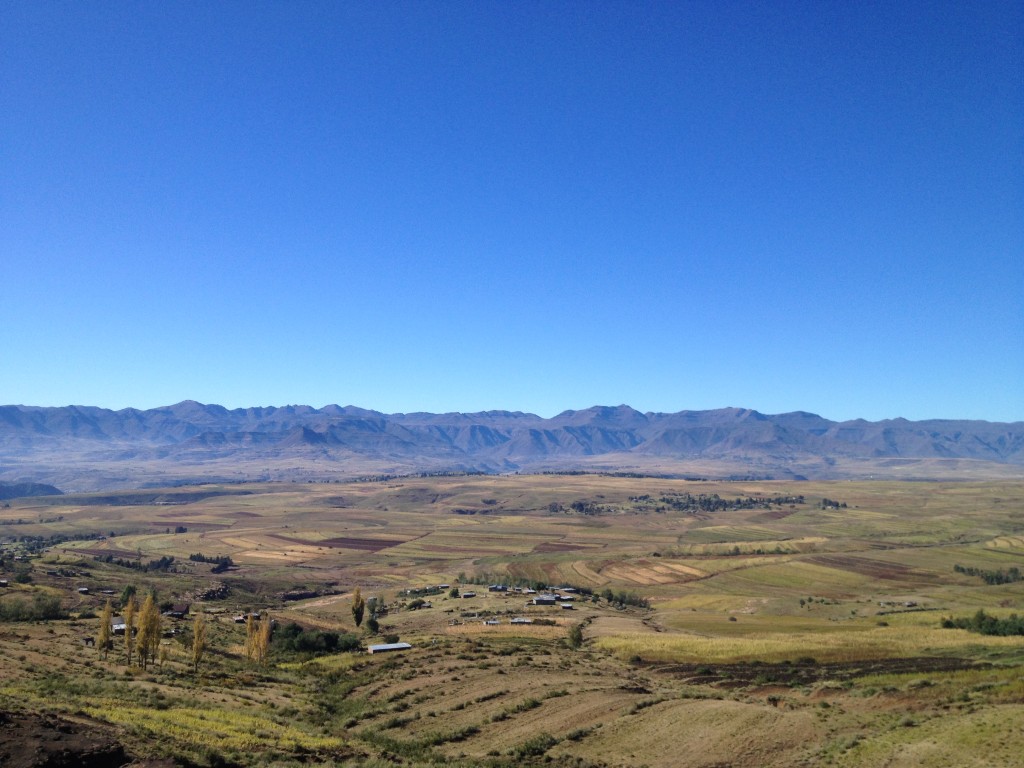
1 Wikipedia tells me that Lesotho is an “enclave,” and one of only three true enclaves in the world, the others being Vatican City and San Marino, both inside Italy. Unlike Vatican City and San Marino, however, Lesotho is not a microstate – it is home to over two million people and occupies an area roughly equivalent to Belgium.
2 In fact, Lesotho is the only country in the world that entirely lies at elevation above 1,000 meters (3,281 feet).

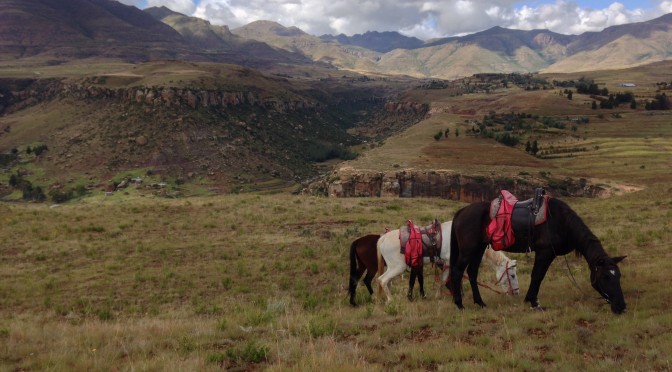

That pony ride sounds like so much fun! I can tell you I would have been an insufferable companion as I couldn’t make it past the title without getting Ginuwine’s “Pony” stuck in my head. (Please tell me that you sang for at least *some* of the ride.)
HAHAHA. I did not sing that during the pony ride, but I will be for the rest of the night now!